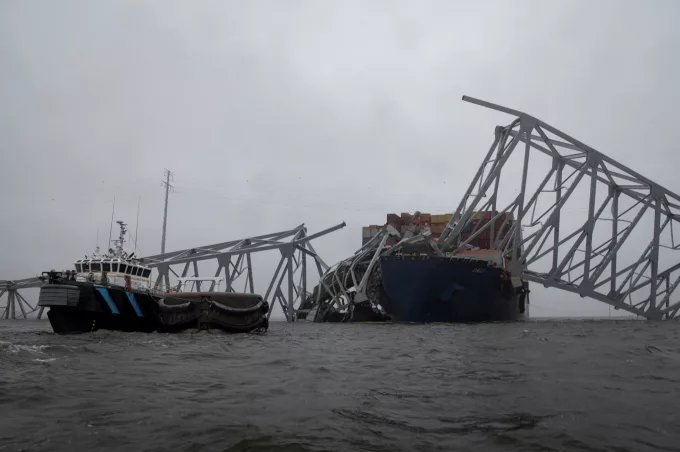Temporary Baltimore shipping channel shift in bid to remove MV Dali
The temporary 30ft channel that allowed larger vessels to transit Baltimore harbour has been closed, ...

MV Dali, which destroyed the middle three sections of the Francis Scott Key Bridge last month, left the port in unseaworthy condition and with an untrained crew, the city of Baltimore alleges in a new lawsuit against Grace Ocean and Synergy Group.
The containership suffered power outages, leaving propulsion and steering unresponsive in the crucial minute as it approached the bridge, the crew powerless to prevent the collision.
Following the incident, a legal case began between the Baltimore city council and ship manager Synergy Group and shipowner Grace Ocean, both based in Singapore, in parallel with an FBI criminal investigation.
Maersk does not appear to be implicated in the case, and is likely to escape liability thanks to the particulars of its charter agreements.
In the legal back-and-forth, Grace Ocean and Synergy have petitioned either for exoneration from liability, or a limitation of liability to $43.7m, which comprises “sound value of the vessel, plus pending freight less repair costs and salvage costs”.
Unsurprisingly, the cit authority disputes each of these, adding that, “at all times relevant to this litigation, Dali was operated in a wilful, wanton and reckless manner”, after failing to “properly train the crew… follow safe work and operational procedures… properly maintain [and] properly equip… conduct adequate inspections”, or “provide a competent crew and safe equipment”.
Baltimore City filings allege: “Reporting has indicated that, even before leaving port, alarms showing inconsistent power supply on the Dali had sounded”, and “Dali left port anyway, despite its clearly unseaworthy condition”.
While the ship’s sudden loss of propulsion could be explained by bad fuel, and has been in many cases, the fact that the entire vessel lost power at once is more suspect, and has yet to be explained.
Although propulsion was provided by a Hyundai main engine, MV Dali also has five auxiliary generators which could have provided power for steering in a conventional loss of propulsion, suggesting its electrics, and not its engine, were the problem.
A sudden tack to starboard, as evidenced in the video – misinterpreted by conspiracy theorists as an attempt to steer the vessel deliberately toward the bridge pier – has since been explained by the action of the Baltimore pilot, who dropped the port anchor in an attempt to miss the pillar.
This caused the vessel’s bow to steer to the opposite side while kicking out the stern, a movement similar to the ‘Scandinavian flick’ seen in motor racing.
Comment on this article